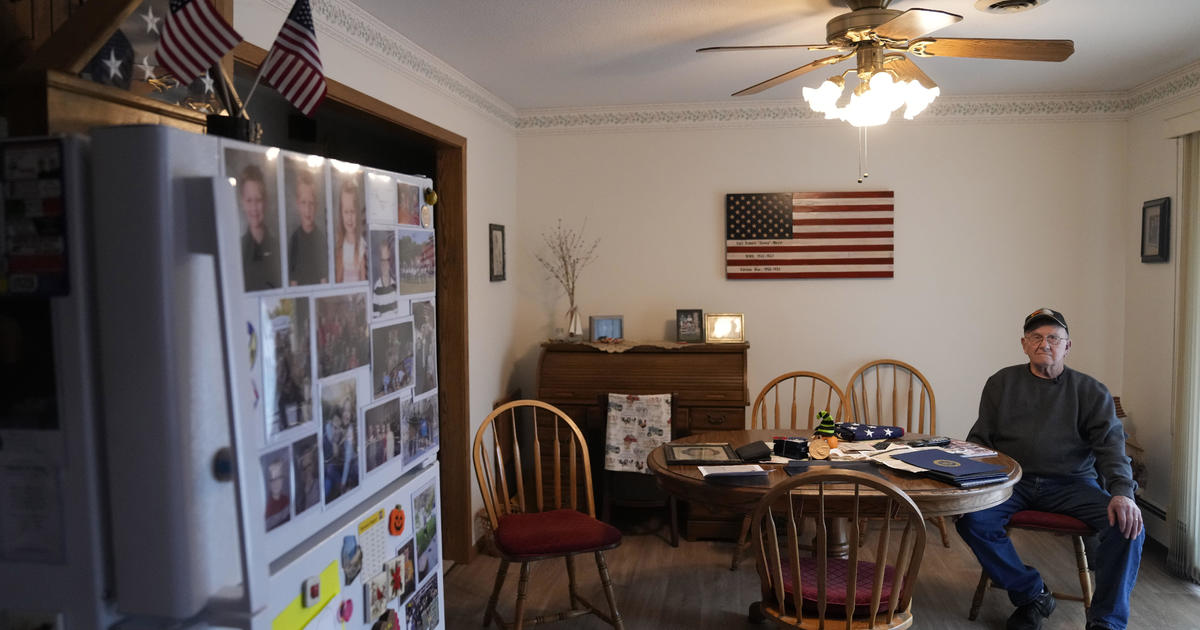Get Ready For Disarray At Minnesota Capitol
ST. PAUL, Minn. (AP) — The massive renovation hiding the graceful lines of Minnesota's Capitol in protective wrap and bristling scaffolding has left the inside even more unrecognizable and uninviting as the Legislature prepares to spring back into action.
Public rally space is nonexistent. Temporary walls seal off two-thirds of the building and create cramped corridors. Portable bathrooms are rolling in as substitutes for the real thing. And weekday school and group tours are being put on hiatus.
The biggest disruptions yet in the multi-year, $273 million restoration await lawmakers and the public when the session gavels in Jan. 6.
Wayne Waslaski, a Department of Administration official managing project logistics, warns it will be inconvenient from now until the anticipated 2017 completion.
"Obviously this is a historic renovation. It's comprehensive in nature," he said. "For a couple of years here it's going to be a very different experience when you come to the Capitol."
In a typical year, 120,000 people file through the Capitol, 13,000 tours are conducted and more than 370 events are held.
Gov. Mark Dayton, who vacated the building last summer along with his staff, compares it to a highway project "where you go through all the disruptions, inconveniences and dislocations for a necessary period of time so when you come through on the other side you have a much better product for the future."
Cass Gilbert's architectural gem is undergoing the fix-up inside and out to address deterioration of the past 109 years while adding modern touches and technological efficiencies.
The project will leave its mark on next year's session.
Senators are working to compress committee schedules — even shaving some panels — to cope with the loss of half their meeting space. Lobbyists will have a tougher time buttonholing legislators exiting the House or Senate floors. Groups that assemble "Day on the Hill" gatherings to press their case are being directed to off-site locations, such as the Minnesota History Center or the Cedar Street Armory.
That relocation alone will deprive the Capitol of its usual bustle. The Rotunda rallies that usually produce chants that echo throughout the building and into meeting rooms will be absent. The front steps will be off-limits for mass gatherings.
Republican Rep. Greg Davids, entering his 23rd year, said he'll miss the ease of interacting with people who show up to wave a sign or take a stand.
"We are the voice of the people and we hear their voice, and that's good," Davids said. "A lot of times when some are giving long speeches on the floor, I like to go out and talk to actual people."
Sarah Strong-Belisle, president of the Minnesota Government Relations Council, said the lobbyist trade group is stressing to its members and their clients that the Capitol is an active construction zone that won't accommodate the major assemblies of the past. She said it puts the onus on groups — and lawmakers — to devise workarounds to keep lines of communication open.
"They're walking a fine line clearly between safety and access and functionality," Strong-Belisle said. "It's a very unusual situation, and challenging."
Bruce Nelson, chief executive officer of the disability advocacy group called ARRM, is especially worried. Each year his group and coalition partners bring in hundreds of patients, caregivers and supporters to press for state funding for disability services.
"It's very important to be there in large groups making themselves heard," Nelson said. "Being able to continue that is going to be compromised somewhat, particularly for folks with challenges navigating through skinny doorways and hallways, with fewer elevators and bathrooms."
Already, Nelson's group has booked the armory for its main rally day, but he knows that won't compare. "We hope the governor and legislators come," he said.
And about those bathrooms? Two heated trailer units will be stationed underneath the main entrance staircase and standard portable toilets will be brought in because the wing of the Capitol housing most public restrooms is closed and the plumbing turned off.
If 2015 proves difficult, it won't even be the worst of it. Senators must vacate their remaining Capitol space the first week of June to keep the project on schedule (the entire building will be closed after that). They'll meet in a new building for 2016, when the House chamber is the only functioning space in what project planners hope will be a late-starting and shortened session.
Waslaski said officials are scoping out emergency space for any special session needed to respond to a disaster.
If all goes as planned, the building will be back to operating as normal in two years with only decorative and finishing work left to do.
(© Copyright 2014 The Associated Press. All Rights Reserved. This material may not be published, broadcast, rewritten or redistributed.)



